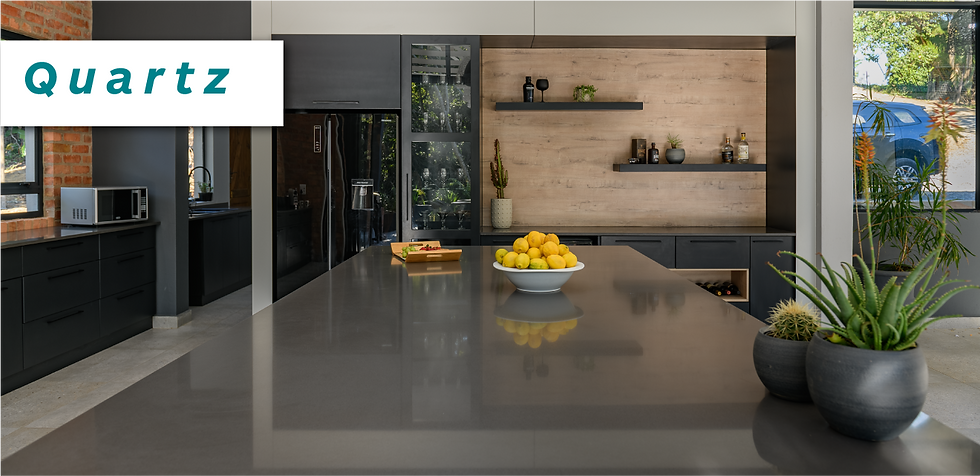Natural Stone, Quartz and Sintered Stone? Oh my!
- ProQuartz Team

- Jul 5, 2021
- 3 min read
Updated: Nov 8, 2022

If you’ve ever had to design a kitchen or research the perfect stone surface, you’ve probably asked yourself “What is the difference between Quartz, Porcelain and Natural Stone?”
When considering all the available options for stone applications, it may become overwhelming and slightly confusing to make a decision on what type of product to use, let alone what colour to choose.
To make things a little bit easier, we’re going to break it down for you here:

Natural Stone
When considering natural stone, you’re looking at stones made by Mother Nature, or as they are known; marble and granite.
These products definitely have their advantages, in that they have a completely natural beauty and an unmatched depth of colour. They are naturally resistant to heat and UV light, making them perfect for outdoor use, however, there are a few downfalls.
Natural stone will have natural fault lines in the stone which can be points of weakness in the slabs. This makes them a challenging application for countertop spaces or tables. An additional hindrance of this product is that it is very susceptible to damage from chemicals, acids or staining due to its varying porosity levels - basically, because it’s natural, it is more absorbent and therefore, easily damaged by unnatural products.
Finally, in terms of pricing, it can be cost effective, depending on the type of stone chosen, however some stones are more expensive than others based on their origin, colour and size.

Quartz
Quartz is an engineered stone, made by mimicking the natural process of stone production. This is done by putting minerals and silica under immense pressure to create a stone slab.
Quartz is a uniform slab meaning that there are no fault lines in the stone, making it a stronger, less porous and more durable option for counters and tables.
The colour of quartz can be manufactured and is only limited by our imagination,even bright green quartz slabs have been popularly used and available in the past. This freedom of colour makes it particularly well-suited for kitchen and countertop application as you are no longer limited to mother nature’s colour palette. However, due to the resin present in the slabs, they are sensitive to both UV rays and heat. This makes quartz unsuited for outdoor applications and means you are advised to not put hot pots directly on your countertops.

Porcelain/Sintered Stone
The first thing to note when it comes to porcelain countertops is that they are not the same as your floor tiles from a regular tile supplier. Porcelain countertops are made from large format porcelain slabs which are stronger, thicker and more durable than a normal porcelain floor tile.
Porcelain slabs are made from natural clays, silica and minerals and baked at over 1000°C for a long period of time. This makes the slabs entirely non-porous and UV-resistant. Porcelain slabs are ideal for outdoor applications, such as outdoor tables or building cladding as well as indoor use for kitchens, dining tables and bars. The slabs are resistant against scratches and chemicals (far more so than either quartz or marble). The ‘down-side’ of porcelain slabs is that they are more costly than your quartz or your marble because they are capable of so much more.
At this stage, porcelain is becoming more popular for its ability to integrate invisible induction technology directly into the slab.
So when considering the options for your next stone application, consider all these factors and see what functionality you need within the space you are designing.




This is such a clear and concise breakdown of the differences between natural stone, quartz, and porcelain! It's great to see the pros and cons of each material laid out in a way that helps make the decision-making process easier. I especially appreciate the note about porcelain’s versatility for both indoor and outdoor use — that UV resistance is a game-changer for outdoor kitchens or tables! Each material definitely has its unique benefits depending on the project. This article really helps in understanding which option might be the best fit for your needs.